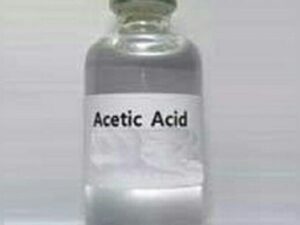Description
Maltodextrin: The Versatile Food Additive You’ve Probably Already Eaten
Maltodextrin. It’s a word that might sound intimidating, pulled straight from a chemistry textbook. But chances are, you’ve already encountered it, and probably even consumed it, in a variety of everyday foods. So, what exactly is maltodextrin, and why is it so prevalent in our diets?
Understanding Maltodextrin: A Simple Sugar Chain
Maltodextrin is a polysaccharide, a fancy term for a chain of glucose molecules. It’s typically derived from starchy sources like corn, rice, potato, or wheat. Through a process called partial hydrolysis, the starch is broken down into shorter chains of glucose units. This creates a white powder that’s soluble in water and has a relatively neutral taste.
Think of it like this: starch is a long, complex Lego castle, and maltodextrin is a smaller section of that castle, broken down into smaller, more manageable pieces.
Why is Maltodextrin Used So Widely?
Maltodextrin boasts a range of properties that make it a valuable ingredient for food manufacturers:
- Thickening Agent: It helps to increase the viscosity of liquids, creating a more desirable texture in sauces, dressings, and beverages.
- Filler: It adds bulk to processed foods without significantly adding to the sweetness or caloric content. This is particularly useful in low-calorie and diet products.
- Carrier: Maltodextrin can encapsulate other ingredients, like flavors and spices, protecting them from degradation and ensuring even distribution throughout a product.
- Stabilizer: It helps to prevent ingredients from separating, maintaining the desired consistency of products like yogurt and ice cream.
- Preservative: By inhibiting the growth of mold and bacteria, maltodextrin can extend the shelf life of certain foods.
Where Can You Find Maltodextrin?
Given its versatility, maltodextrin appears in a wide array of processed foods, including:
- Snack Foods: Chips, crackers, and pretzels often use maltodextrin for texture and binding.
- Processed Meats: It can be found in deli meats and sausages to improve moisture retention and texture.
- Sauces and Dressings: Used as a thickening agent.
- Diet Foods and Supplements: Often used as a filler and to improve palatability.
- Sports Drinks and Energy Gels: Provides a source of easily digestible carbohydrates for energy.
- Instant Pudding and Desserts: Contributes to texture and thickness.
- Baby Food and Infant Formula: Sometimes used as a carbohydrate source.
Is Maltodextrin Safe?
For most people, maltodextrin is generally considered safe. The FDA has classified it as GRAS (Generally Recognized As Safe). However, there are some potential considerations:
- Glycemic Index: Maltodextrin has a high glycemic index, meaning it is quickly absorbed into the bloodstream and can cause a rapid spike in blood sugar. This is particularly important for individuals with diabetes or insulin resistance.
- Gut Health: While generally safe, some individuals with sensitive digestive systems or inflammatory bowel diseases (IBD) may experience digestive discomfort like bloating, gas, or diarrhea after consuming large amounts of maltodextrin.
- Allergies: While maltodextrin is derived from starch, the processing removes most of the proteins associated with common allergens like corn, wheat, and rice. However, those with severe allergies to these grains should exercise caution and consult with their doctor.
The Bottom Line
Maltodextrin is a common and versatile food additive used to improve the texture, stability, and shelf life of a wide range of processed foods. While generally considered safe for most people, it’s important to be aware of its high glycemic index and potential impact on gut health. Reading food labels and understanding the ingredients in our food is key to making informed dietary choices. So, next time you see “maltodextrin” on a label, you’ll know exactly what it is and why it’s there.





















Reviews
There are no reviews yet.